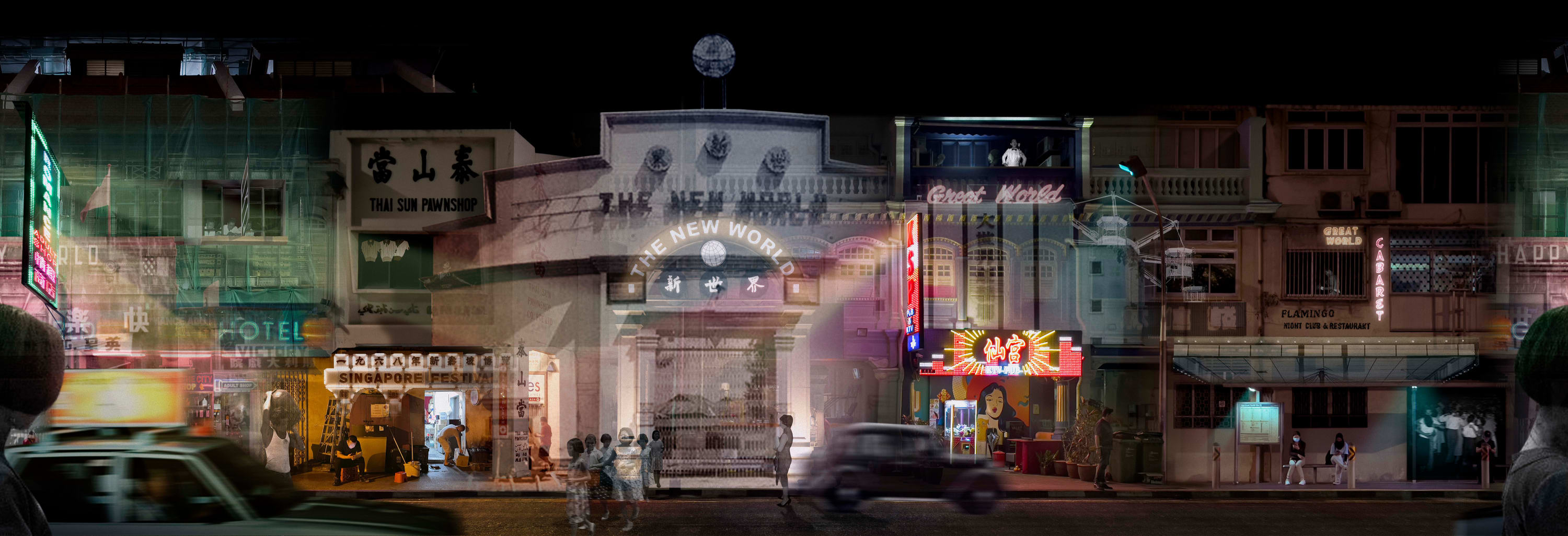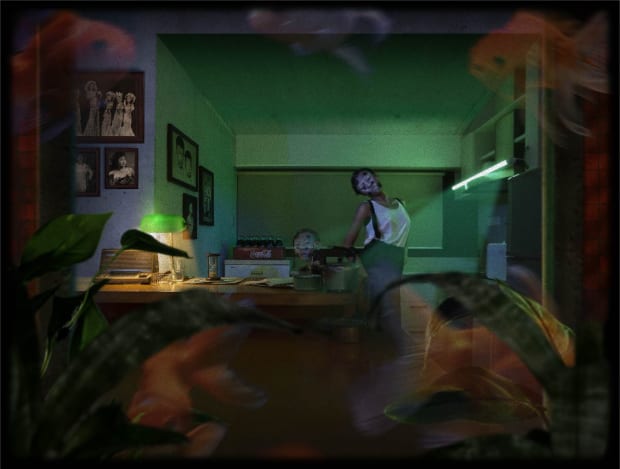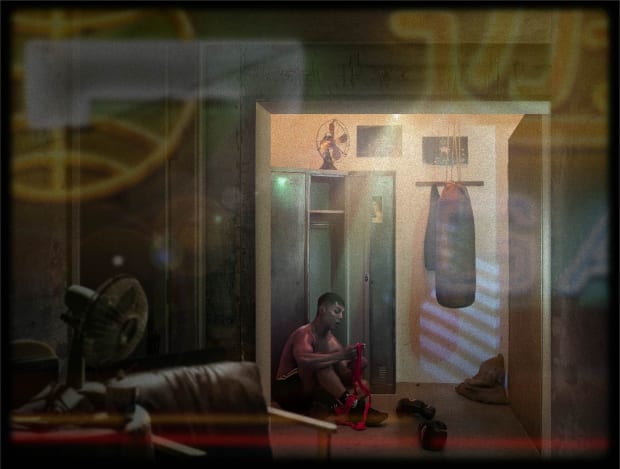-
The New World opened one hundred years ago, in 1923. The first of three entertainment worlds that would become fixtures in Singapore from the 1920s to the 1960s, the park offered attractions and amusements ranging from carnival rides and special foods to performances and athletic events. Great World, opened in 1931, and Happy World, opened in 1937, each offered a similar mix of public entertainment: cabaret, boxing, opera, open-air cinema, bumper car and ghost train rides, and games of chance. They also retained cultural elements reminiscent of the Malaya-Borneo Exhibition of 1922. This exhibition had showcased the region’s trade, crafts, natural history, and cultural heritage in the tradition of world’s fairs like the World’s Columbian Exposition held in Chicago in 1893. Home to a ferris wheel, carousel, and football pitch along with stages for cultural performances, the Malaya-Borneo Exhibition was installed as a three-week spectacle geared to highlight the region’s economic potential and cultural richness. The permanent entertainment worlds were developed with the same attention to a spectacular environment including coloured fountains, zoos, and hundreds of food stalls while making room for many styles of live performance: Vaudeville, Malay bangsawan theatre, wayang Peranakan, and many regional types of Chinese opera including Cantonese, Hainanese, Hokkien, Peking, and Teochew. At one point, Great World created a replica of an ancient Chinese city populated with actors dressed as peasants in period garb. The entertainment also included popular, bawdy and risqué performances, from getai (song stage) performances including a band, vocalists, and painted backdrop for cross-talk and folk dances to strip-tease, dance halls, cabarets, and beauty contests. At the time, these entertainment worlds were praised as inclusive spaces open to the ethnically and economically diverse populations of Singapore, as in this description in a 1937 article in The Singapore Free Press and Mercantile Advertiser:
…These huge playgrounds… patronised by Europeans, Eurasians, Chinese, Malay, Indians, Japanese and the rest of the racial conglomeration of Singapore, are products of the past twenty years. From scant and scraggy plots of ground… they have developed into lusty and strapping parade grounds of the rich and poor alike, where a Towkay may entertain twenty friends to dinner in the “million dollar” private apartment of the expensive restaurants… and where the humblest member of the working class may spend his very hard-earned fifty cents or more unostentatiously at the gaming booths, the open-air cinema, or the laneside hawkers.¹It is this early 20th century setting that Sarah Choo Jing has mined to create stage sets and character types for Dancing Without Touching, filmed as collaborative projects in which costumed performers are invited to inhabit their character, react to their environment, and explore the character’s gestures and expressions. -
-
 Sarah Choo Jing, Dancing Without Touching, 2022
Sarah Choo Jing, Dancing Without Touching, 2022 -
-
 Sarah Choo Jing, Dancing Without Touching, 2022
Sarah Choo Jing, Dancing Without Touching, 2022 -
-
A series of speculative fantasies for the performers, the artist, and the audience set in the context of the early 20th century wonderlands that were themselves escapes from everyday Singapore, Dancing Without Touching evokes two other time periods. The first, our present moment in which these video works were created, is coloured by digital pivots, social distancing, and a fraught relationship with screens. Connectivity and self-fashioning through social media channels make us all constant members of a large crowd of viewers, while also creating the conditions for mass anxiety, loneliness, and alienation from the world around us. The second coincides with the period of decline of Singapore’s entertainment worlds in the 1960s and 70s, when philosophers wrote extensively about palpable social shifts in perception and experience. Jean Baudrillard’s The Hyper-realism of Simulation, first published in 1976 offered the observation that, “unreality no longer resides in the dream or fantasy, or in the beyond, but in the real’s hallucinatory resemblance to itself. To escape the crisis of representation, reality loops around itself in pure repetition.” The “hallucinatory resemblance” to reality underpins the works of Dancing Without Touching, straddling the historical circumstances and contemporary context that the videos simultaneously inhabit. Also addressing the presence of the real and the unreal in our lived realities, Michel Foucault’s concept of heterotopia first appeared in Of Other Spaces in 1967:
-
 Sarah Choo Jing, Dancing Without Touching, 2022
Sarah Choo Jing, Dancing Without Touching, 2022 -

-
Sarah Choo Jing’s project is devoted to the heterotopic spaces created by the camera lens as a cultural mirror. Both an escape and a reckoning, Dancing Without Touching is a fleeting glimpse of worlds gone, worlds just out of view, and worlds to come.The artist invites creative responses to the video works, soundscape, and architectural environment of Dancing Without Touching. To submit works of fiction, poetry, or critical analysis, please email info@yeoworkshop.com by 16 February 2023. Selected submissions will be included in a public programme on 18 February 2023. Follow us on Instagram and Facebook for more information to come!Find out more about the exhibition here.¹ Singapore’s new playground. (1937, April 27). The Singapore Free Press and Mercantile Advertiser (1884–1942), p. 1. Retrieved from NewspaperSG.
-
On the other side of the glass: Sarah Choo Jing’s Dancing Without Touching: Text by Dr. Karin G. Oen
Past viewing_room




